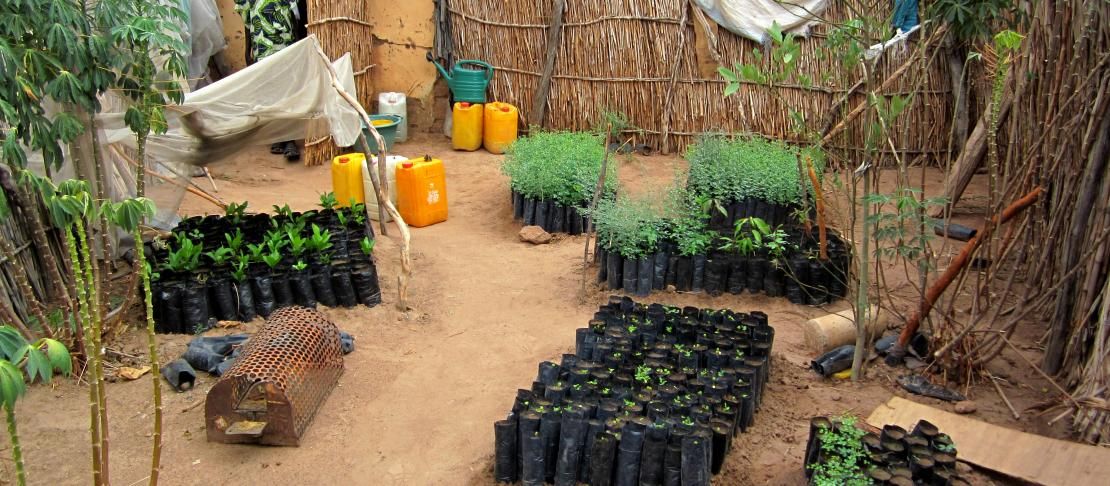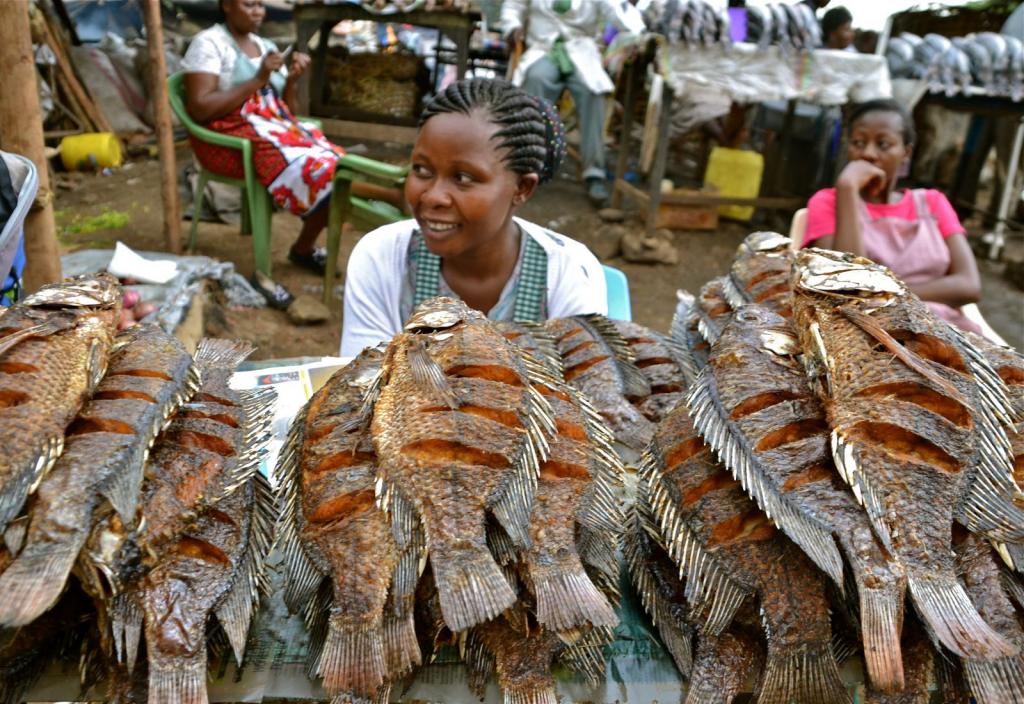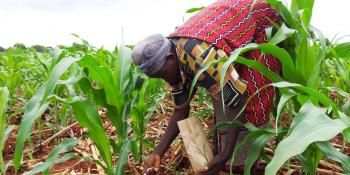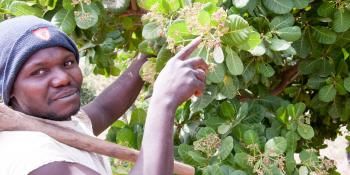Which types of households are more likely to be food secure?

Data analysis reveals that adoption of agriculture adaptation strategies is spreading in West Africa but the benefits from ‘climate-smart’ farm practices vary.
Mavis Derigubah works for the Ministry of Food and Agriculture in local communities in Ghana. She works together with a team introducing climate-smart agriculture practices such as land terracing, strategic use of fertilizers, water conservation, and agroforestry techniques. Farmers in the areas testify that not only have they learned a lot, they are also seeing the benefits from the practices.
A concern, however, is that there is a lack of thorough analyses of the impacts of climate-smart practices on food security and of which which practices work under which contexts. This is despite the recent promotion of various climate-smart strategies, designed to help farmers adapt to, and mitigate the impacts of, climate change. This information is key to supporting farmers with the right type of climate-smart practices at the right time.
A recently published article in Regional Environmental Change analyses data from 600 households in West Africa and reveals much about the linkages between agricultural adaptation strategies and food security.
Download article: Linking agricultural adaptation strategies, food security and vulnerability: evidence from West Africa. Douxchamps S et al. (Limited Access)
Authors' pre-print article is available here (PDF)
The team examined and assessed the food security impact of adaptation strategies such as crop diversification, soil and water conservation, the use of improved crop varieties and of fertilizers, as well as the practice of keeping trees and small ruminants on farms.
The research team also looked at the various farm household characteristics and their productivity by asking questions about who is practising what and what the characteristics of the households engaging in various climate-smart practices are.
The findings reveal that although ‘climate-smart’ farming practices do have positive impacts and are starting to spread in West Africa, their benefits are also dependent on land productivity and land size.
The data also show that farmers who are more oriented and engaged in selling products at the market were also more food secure year-round.
The findings indicate that what is ‘climate-smart’ for one farmer is not necessarily the right climate adaptation solution for another.

Study reveals that farmers who are more market oriented tend to also be more food secure year around. Photo: C. Schubert (CCAFS)
Which types of households are more likely to be food secure?
What is IMPACTLite?
IMPACTLite is an in-depth household survey tool, which can help researchers see the big picture and collect key information around farming systems, for example if and how farmers are adapting agriculture practices, in a standardized format. The tool provides data which are in-depth and quantitative with a built-in component for gender-disaggregated analysis. Learn more.
The analysis was carried out using a stratified sampling strategy and the ‘IMPACTlite’ survey methodology. The research was conducted in three research sites of the CGIAR Research Program on Climate Change, Agriculture and Food Security (CCAFS): Lawra-Jirapa in Ghana, Kaffrine in Senegal and Yatenga in Burkina Faso.
Farmers were asked about what resources they had access to and used, how they managed their crops, livestock and land, how much they produced and consumed, and a range of other questions to examine patterns and trends across different agricultural systems found in the region.
Throughout the analysis the team identified four distinct household types which exist in the region:
- Subsistence Farms, which are not self-sufficient households and use a small land area per capita with low market orientation;
- Diversified Farms, which are good at diversifying crops and intensifying production on small areas with relatively high market orientation;
- Extensive Farms, which have little market orientation, low productivity and focus on staple food crops, but have greater self-sufficiency through off-farm incomes and livestock;
- Intensified Farms, which are good at diversifying crops and livestock on larger areas with high market orientation. This grouping allowed the authors to analyse which adaptation strategies work and apply to the different types of households.
The analysis suggests that diversified and intensified farms are be better equipped to meet their food needs, and can continue to do so as the climate and demographics change by increasing already present and well-developed climate adaptation strategies and practices.
For other farm households to achieve food security, especially subsistence farms, they might have to change the way they are operating. Here, either finding ways to secure off-farm incomes or finding ways to move from subsistence-oriented farming to diversified or more intensified farms.
What farmers need to improve food security
Given that land sizes will most likely not change, it is vital to increase engagement in the local market, intensify farm production as well as the use of climate-smart practices. Ideally farmers should implement several climate-smart practices in parallel, as some practices feed off each other, for example mixing livestock and crops where manure is used as fertilizer and specific crop residues as nutritious fodder.
The results also suggest that it might be more helpful to examine adaptation pathways for the different types of households, and what those pathways might include, more so than getting farmers to adopt specific climate-smart technologies. A pathway would be more holistic in its intervention and cater to the various needs and challenges of that specific farm. Understanding households’ coping strategies and mechanisms as well as their agricultural and livelihood decision-making processes is key to providing them with tailored sets of adaptation strategies or pathways.
The typology developed in this study gives a good entry point to analyse which interventions should be targeted to which groups of smallholder farmers, and quantifies the effect of different adaptation options on household-level food security, thereby helping to assess their effectiveness.
It is clear that there are no ‘one-size-fits-all’ solutions. For different farmers, different adaptation strategies will be ‘climate-smart’.
For farmers to successfully adapt they need better access to information on various climate-smart opportunities, supported by trainings to access, test and modify different options so that they work in that specific context. Improved and accessible climate information, for example weather updates and forecasts relevant to their local area is also key.
Access to climate information seems also to be one of the interventions most appreciated by farmers in Ghana, as they are now able to easily call a number to acquire local forecasts for before making any farm decisions; activities that are carried out by CCAFS, ESOKO together with multiple of other partners:
Learn more:
Download article: Linking agricultural adaptation strategies, food security and vulnerability: evidence from West Africa. Douxchamps S et al. (Limited Access)
Read the authors' pre-print article (PDF)
Visit the IMPACTLite tool homepage
Read more IMPACTLite blogs on CCAFS
Story by Sabine Douxchamps, researcher based at the International Livestock Research Institute (ILRI) and Patti Kristjanson, senior researcher based at the International World Agroforestry Centre (ICRAF). Story edited by Cecilia Schubert, Communicator Flagship on Policies and Institutions.



